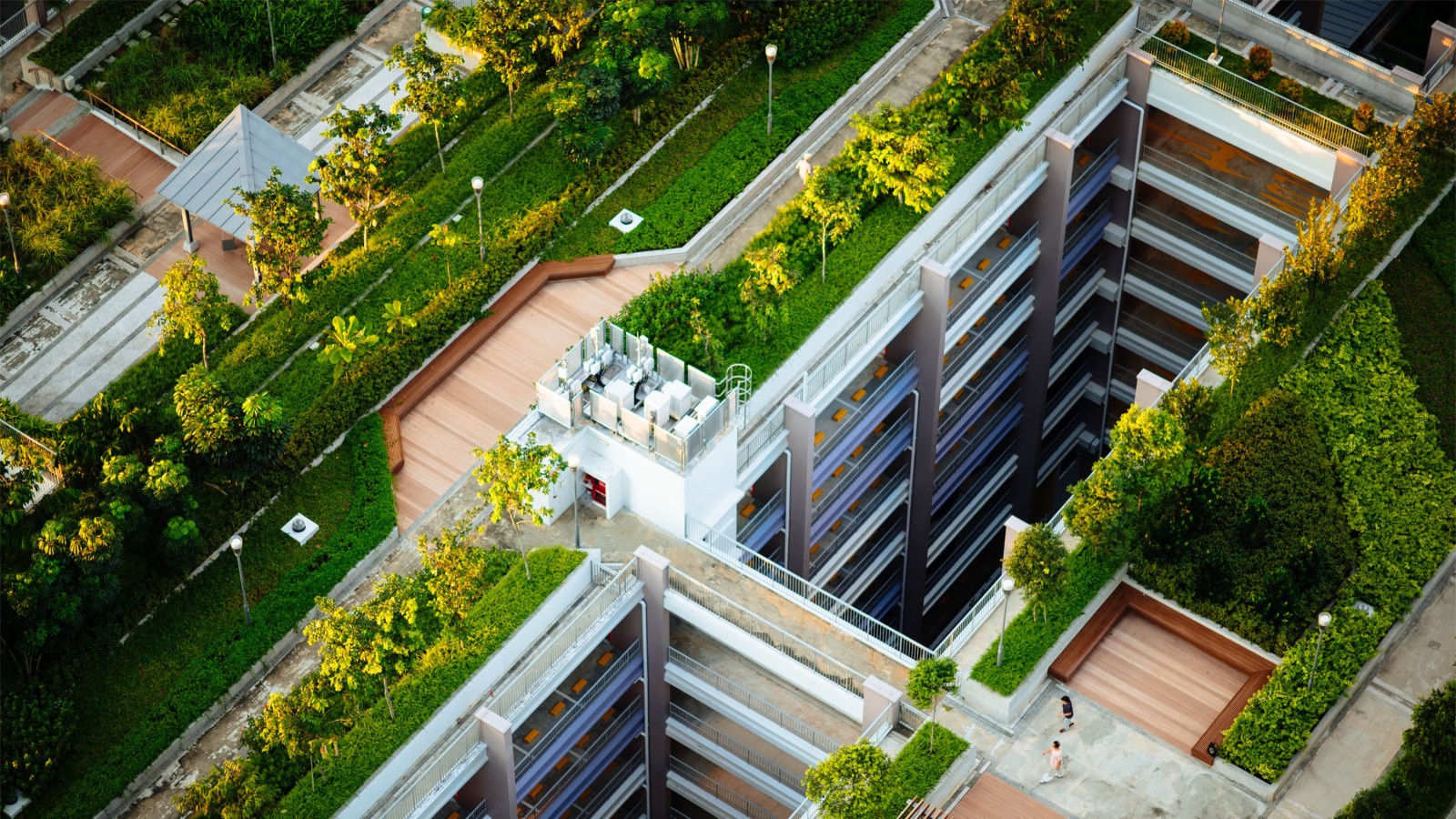In some parts of the world roof gardens are fairly common, in other parts they are kind of rare. We currently live in the region where having a garden on the roof is a real rarity, but as we grow up and modernise into a Medium Density future, there is going to be less space allowed for gardens at ground level. That means, of course, if you play your cards right, there may be some space for a garden at roof level instead! Let’s make the most of that and design them right.
What are some of the aspects that you might know about the humble roof garden? Commonly held viewpoints based on roof gardens of the past would include: that they leak, that they dry out, that they weigh down your roof too much, and that they blow away in Wellington if they are too exposed. Well, yes, all those can be true if you detail them wrong, but the opposite can be true if you really put some attention into the detailing!
Let’s look at some of the up-sides first of all though, with the primary, obvious one being that a roof garden can give you a private garden with absolutely stunning rooftop views. Visions of the Middle East come to mind, where in cities like Cairo, every house has an outdoor upstairs where you can sit on a hot summers night, and watch the sun go down behind the Pyramids at Giza. Or in Mexico, where the heat is immense, and the mass concrete slab that is the roof can also ameliorate the temperatures somewhat. Most of the time though, people don’t go up there to garden or to sunbathe, but instead just to have some simple access to rooftop fresh air. For that reason, whatever plants you have up there, will need to be plants that take the minimum of care, and some baking hot temperatures.
Insulation is a tricky issue and will be an item to resolve at an early stage, especially with the new requirement for R6.6 roof insulation. Effectively you need to build a warm roof construction, not a cold roof construction. There are warm roof experts and roof garden experts — make sure that you make a well-informed decision, so listen to all the experts.
Having a roof garden can provide some great insulation, both thermally and acoustically, although to an extent that certainly depends on depth of soil. Some roof gardens are planned with a thin, lightweight layer of soil and some basic planting that likes a dry arid area to grow in, but I’d prefer a nice bit of tussock growing out my rooftop if I had the chance. To be honest, a skinny layer of pumice stone and some pebbles on top is not my idea of a fun time — plus, in my town they will simply blow away and create havoc with people below being rained on with succulents, pebbles, and spiky cacti.
On the other hand, planning for a deep layer of rich loamy soil might also be a problem, unless you have adequately briefed the engineer first. The thickness of soil can also absorb a lot of water so the rooftop garden can get really heavy and act like a battering ram, testing the ability of your building to withstand a shake. Top heavy is never good in earthquake country — but as long as you plan for the weight properly, you will be fine.
The biggest issue, of course, is the potential for water ingress. Again, however, careful planning and a good water-proofing system are the absolute minimum to have in our very wet climate. And the second most important issue is — what is your substrate made of? In Cairo and Mexico of course their roofs will be made of concrete, and so a heavy roof structure like that can easily take some extra plant load. But in Aotearoa New Zealand we are a lot more likely to have a lightweight roof, made of timber, or light gauge steel joists, and little appetite to really build up the mass up high.
Your detailing, therefore, and careful selection of the substrate and the system, are of vital importance to understand and specify early on. Talk to an expert, before you get too far at all. Water goes down, generally, but with air pressures on roofs, water can be pushed upwards as well. Always construct two outlets for water to escape. The waterproofing membrane needs to be bullet-proof in effect, as you don’t want to have to be back digging it all up again in a few months time — or even a few years! The substrate needs to be suitable for the waterproofing to adhere to, and there needs to be layers for trapped water to escape and be safely carted away down a pipe to discharge safely somewhere else. So, even if you have a nominally ‘flat’ roof, you are still going to need to have the substrate laid to falls as well, to get that water off. Allow a healthy amount for weatherproofing upstands, and remember that the creeping root systems of plants, no matter how sweet the plant looks, may have catastrophic effects on waterproof membranes if they get their tendrils into somewhere they shouldn’t be. Does it even need to be said: No fixings through your membrane, ever. If you or someone else pokes a hole through your membrane, water WILL find a way to get there too. Eliminate point loading — make sure everything rests on a separate pad, and is not stressing the membrane at all. Use proprietary fittings with tested systems for eliminating point loads.
Lastly, sadly, no trees. Trees are big and heavy and really are best with their feet on the ground. Allow them to fill the garden at ground level instead. Keep your roofs for people, tussock, wildflowers and some small happy birds chirping up a storm. Time for a well-mannered roof party!
Medium Quick-Fire Quiz — Be in to Win!
This month's Medium Quiz-Fire Quiz is sponsored by Viking Roofspec. Enter the draw to win a Chuffed Experience voucher for two — supporting Kiwi businesses bringing you unique experiences all over New Zealand! Simply answer our questions to enter the draw — entries close 5pm Thursday 8 June 2023.




























 Most Popular
Most Popular Popular Products
Popular Products


